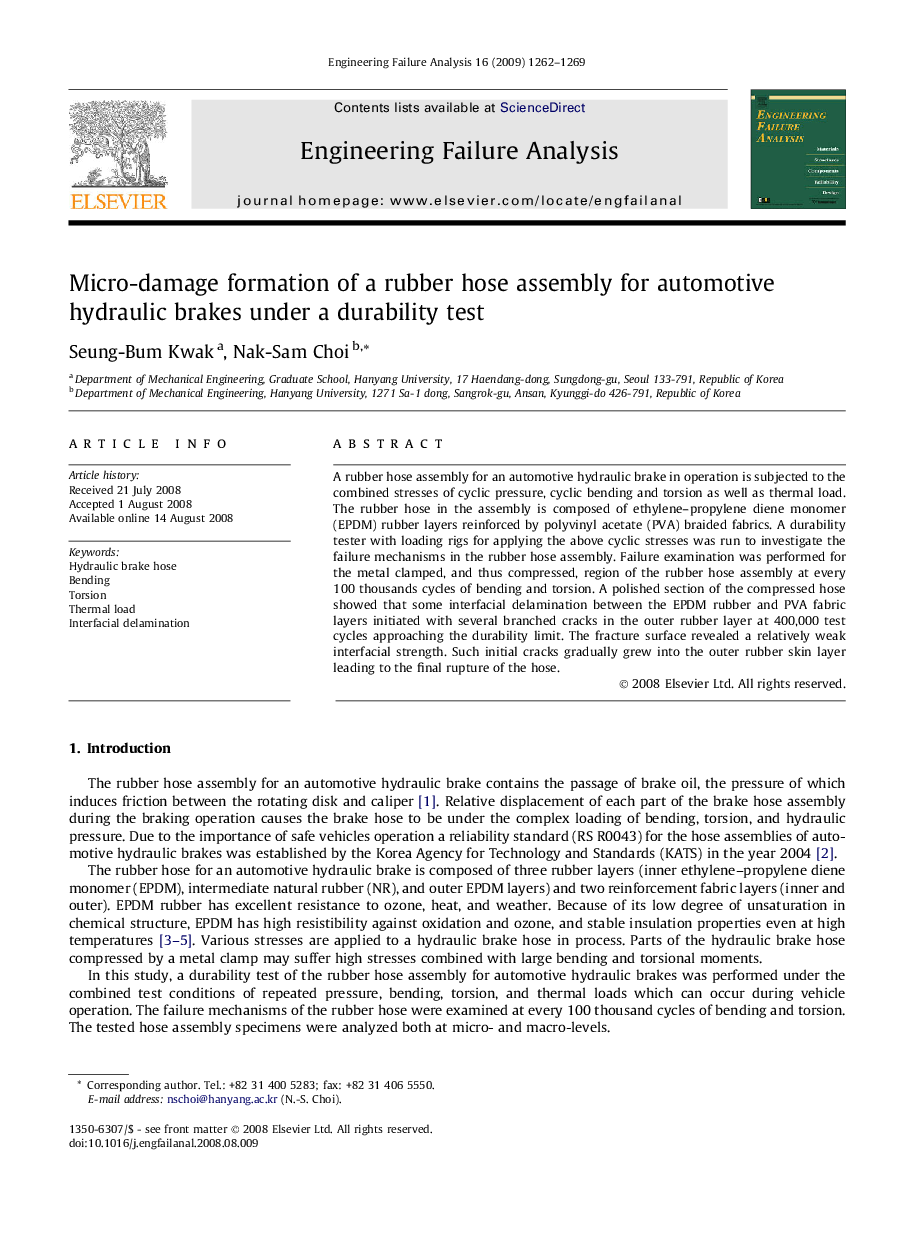| Article ID | Journal | Published Year | Pages | File Type |
|---|---|---|---|---|
| 769937 | Engineering Failure Analysis | 2009 | 8 Pages |
A rubber hose assembly for an automotive hydraulic brake in operation is subjected to the combined stresses of cyclic pressure, cyclic bending and torsion as well as thermal load. The rubber hose in the assembly is composed of ethylene–propylene diene monomer (EPDM) rubber layers reinforced by polyvinyl acetate (PVA) braided fabrics. A durability tester with loading rigs for applying the above cyclic stresses was run to investigate the failure mechanisms in the rubber hose assembly. Failure examination was performed for the metal clamped, and thus compressed, region of the rubber hose assembly at every 100 thousands cycles of bending and torsion. A polished section of the compressed hose showed that some interfacial delamination between the EPDM rubber and PVA fabric layers initiated with several branched cracks in the outer rubber layer at 400,000 test cycles approaching the durability limit. The fracture surface revealed a relatively weak interfacial strength. Such initial cracks gradually grew into the outer rubber skin layer leading to the final rupture of the hose.
